#high rise invasion icons
Explore tagged Tumblr posts
Text
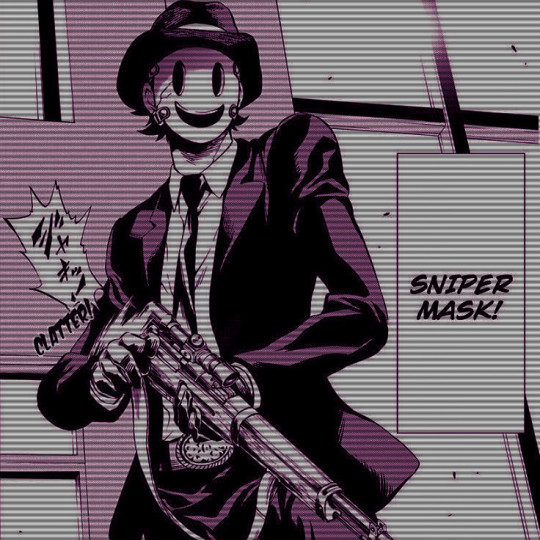
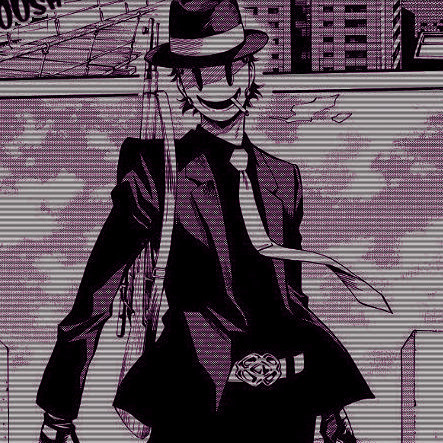
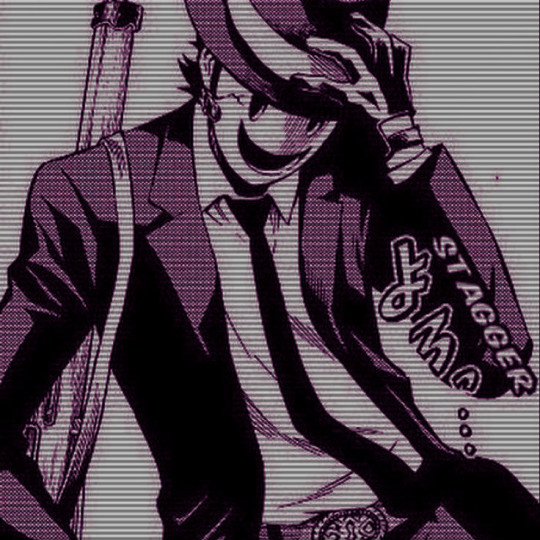




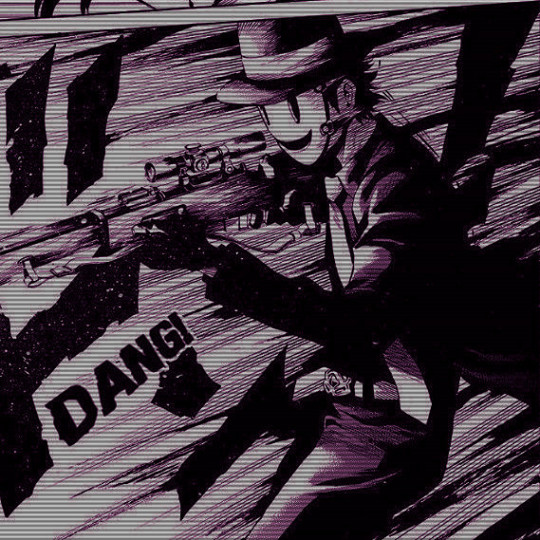
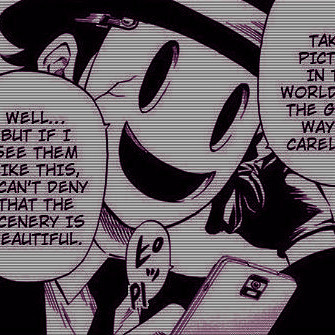
sniper mask. ♡
#high rise invasion#tenkuu shinpan#sniper mask#yuka makoto#makoto yuka#high rise invasion icons#tenkuu shinpan icons#sniper mask icons#manga icons#manga edits#edits#pink edits#pink edit#manga edit#polarr filter#icons with polarr
71 notes
·
View notes
Text


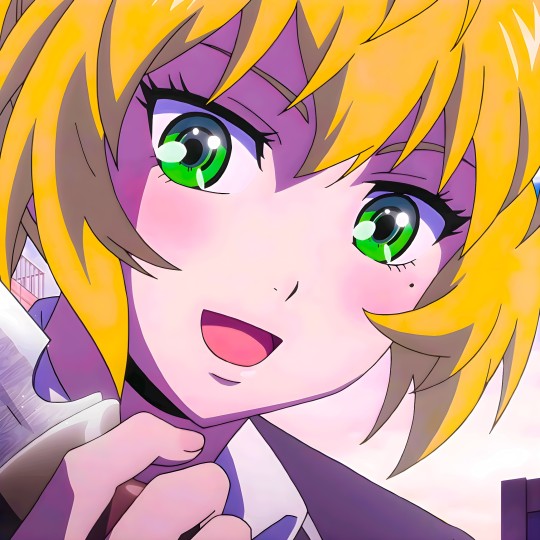
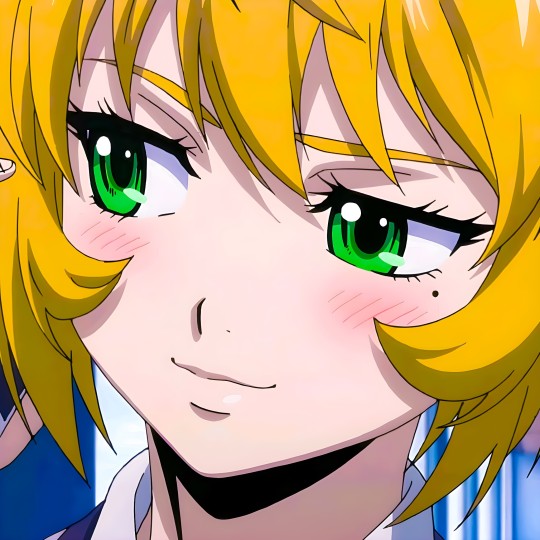


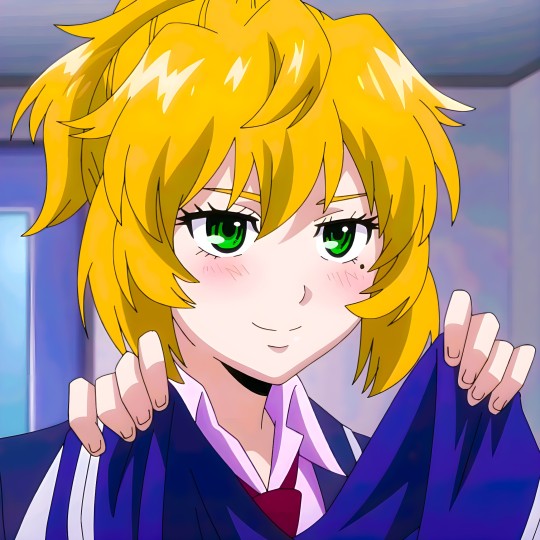
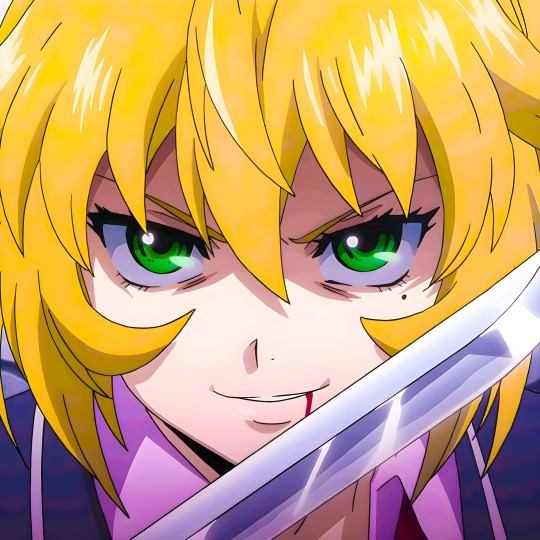
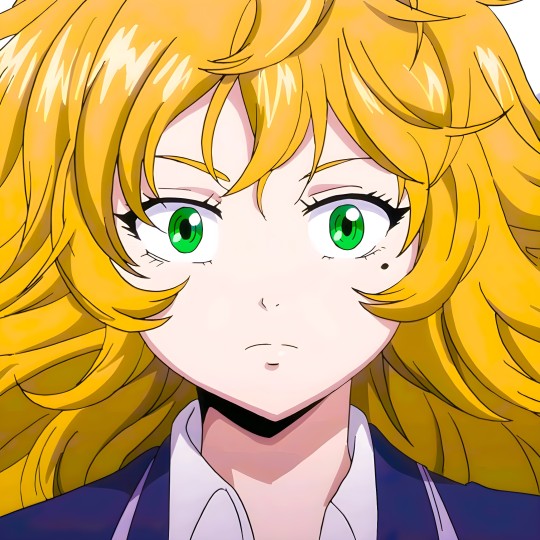
๛ 𝐌𝐀𝐘𝐔𝐊𝐎
[Tenkuu Shinpan]
#tenkuu shinpan#tenkuu shinpan icons#nise mayuko#mayuko nise#sniper mask#girl#waifus#waifu icons#waifu#high rise invasion#twitter icons#matching icons#icons#icons anime#anime#random icons#animesbrasil#anime icons#aesthetic icons#anime icon#icon#pfp#pfp icons#matching pfps#anime profile pictures
49 notes
·
View notes
Text
small icon dump !!



i haven't had time to make any more than these + the jjk ones i just put up , so sorry !!
i'll try to get the rest out soon <3
like or reblog if using !!
#jonah scott#junji ito#kazuya hikizuri#the strange hikizuri siblings#sniper mask#high rise invasion#my icons#icons
8 notes
·
View notes
Text


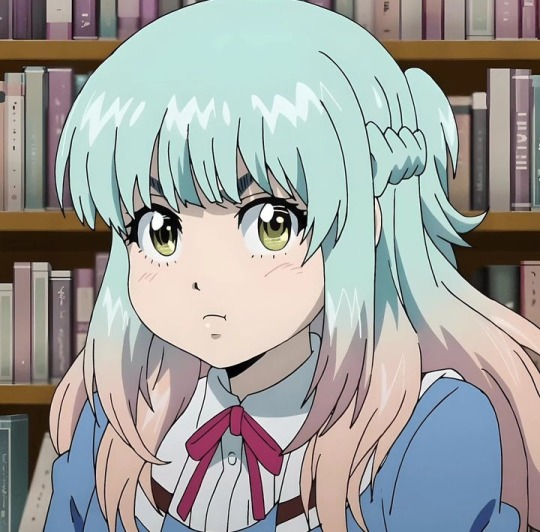


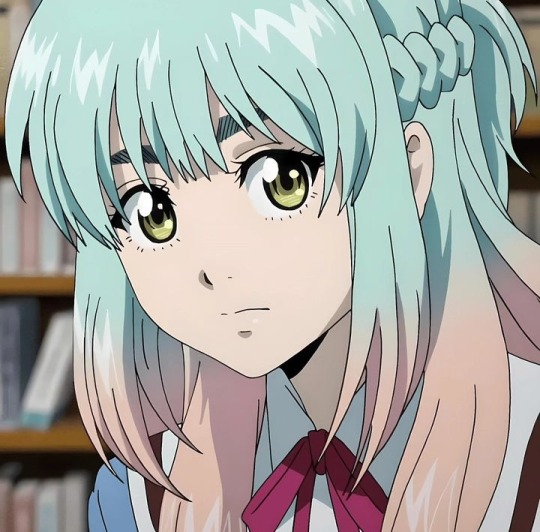
8 notes
·
View notes
Note
Hi Can I please request a Kuon layout from High Rise Invasion.Thank you






thank you for your request <3
kuon shinzaki from high rise invasion
#🎥 serexvu layout#twitter layouts#twitter layout#twitter themes#anime#twitter#anime icons#manga#manga icon#anime icon#twitter headers#manga icons#layouts#kuon shinzaki#high rise invasion
6 notes
·
View notes
Text
Facts ( she told me so )
Are They Bi?

Propaganda: swoons over pretty boys (Sniper, Prophet), dreams of holding her girl friend Nise's hand (and gave her a cheek kiss that one time uwu)
14 notes
·
View notes
Text
Writing Notes: Fashion History

for your next poem/story (pt. 2/2)
1950s
The 1950s were a time of large cultural and social change, which was reflected in the world of fashion. The Korean War began in 1950, followed by the introduction of the color TV in 1951. And in 1954, the modern civil rights movement began.
As the suburbs became popular, family and domesticity for women became a prominent force in society. Additionally, teenagers became fashion consumers and market leaders for the first time.
Due to technological advances, new fibers such as polyester, triacetate, and spandex are introduced.
The prominent trend of the time was femininity, as shown by the prominence of Christian Dior's "New Look". Shape was emphasized by full swing skirts or narrow pencil skirts, as well as fitted bodices and a small waistline achieved with the help of petticoats and girdles. Elegant accessories and jewelry such as hats and pearls were popular at the time, and high heels were ubiquitous. Other trends included Peter Pan collars, tapered or capri pants, and the introduction of the bikini.
1960s
The Beatles led the music and fashion “British Invasion,” influencing teenagers with their Mod aesthetic.
The Civil Rights movement led to the popularity of ethnic and African-inspired garments such as dashikis and caftans.
The 1960s were marked by eclecticism, both in fashion and society. A plethora of styles were fashionable at one time, ranging from space age fashions using vinyl and synthetics, to bold prints, colors, and disposable paper dresses inspired by Pop Art.
Mod fashion appeared on the London scene, with fashion designer Mary Quant as the “high priestess” of the style, and Twiggy as its supermodel.
Boutiques, a 1960s creation, began offering designer ready-to-wear collections, while easy-care fabrics were increasingly used by the general public.
Longer hemlines were dominant with maxi skirts and granny dresses, while hot pants and mini skirts were adopted by the younger market. These shorter hemlines popularized the use of pantyhose for modesty. As the decade progressed, chemise dresses that typified the dominant straight A-line silhouette became popular. Turtleneck blouses and sweaters were common, and sleeves were usually three-quarter length. Sleeveless tops were worn after the mid 1960s.
Jacqueline Kennedy became a major fashion icon, famous for her sophisticated style, pillbox hats, and pearls. Overall, hats in general experienced a decline in use, due to the popularity of high bouffant hairstyles.
Knee high go-go boots were popular, patent was often used, and low-heeled, square-toed shoes were common.
Popular accessories included headbands, bold jewelry, and matching shoes and handbags.
1970s
During the 1970s, the eclecticism of the previous decade continued, and influences from subcultures dominated fashion.
The Vietnam War ended in 1973, and the first Earth Day was celebrated in 1974.
The hippie subculture emphasized environmental awareness and social acceptance, translating into the popularity of natural fibers and earth tones, loose garments, blue jeans, and ethnic influences in dress.
Peasant blouses and skirts and psychedelic prints were popular, as well as historic revival styles.
In the late 1970s, music styles such as glam rock, disco, and punk influenced fashion and resulted in flashy, often shocking styles.
For the most part, clothing was loose and unstructured compared to previous decades. Skirts came in a variety of lengths — mini, midi, or maxi — although the mini and maxi were the most popular.
Unisex styles in clothing became a trend and were perpetuated by Diane Keaton’s character in the 1977 film, Annie Hall.
Trousers and blue jeans were worn by women more than ever before. Designer jeans arrived on the market, resulting in the birth of “licensing” for non-fashion products. Polyester was the other preferred textile for trousers.
1980s
With the rise of new media such as MTV, the 80s fashion landscape began to shift rapidly.
The televised wedding of Prince Charles and Diana Spencer caused a fashion frenzy, with "Lady Di's" elegant hats, tailored suits, and evening dresses making her a global style icon.
The 1980s were known as the "Me" Generation, with an emphasis on logos and designer labels.
The decade also saw the rise of yuppie (young urban professionals) culture, and the introduction of the fitness craze.
In the world of high fashion, postmodernism and avant-garde fashion were vastly influential. With the introduction of yuppie culture, business attire and "power-dressing" with items like shoulder pads was a popular trend.
In light of the fitness craze, leg warmers, tights, and leotards were widely worn, and women accessorized with big hair, flashy costume jewelry, and bright heels.
In terms of undergarments, Madonna and Jean-Paul Gaultier inspired an underwear-as-outerwear trend alongside the popularity of Calvin Klein.
1990s
The 1990s reflected subcultures such as punk, goth, and grunge in fashion.
Hip-hop music became popular and as a result, urban fashion was popularized.
Unlike previous decades, the 1990s was notable for a more relaxed and casual look, as well as the introduction of technology such as cell-phones and pagers.
With the rise of globalization & technology, the fashion cycle began to speed up.
1990s style was often considered "anti-fashion," with purposefully clashing or contradictory aesthetics.
Black, minimalist styles were popular, as well as vintage and 1970s style.
Many younger people sported crop tops, cargo pants, and blue jeans, and athletic wear in daily life. In terms of shoes, high heels, wedges, sandals, platforms, and sneakers were all widely worn.
More Notes: On Fashion ⚜ More: Writing Notes & References
#writing notes#fashion#fashion history#writeblr#studyblr#spilled ink#dark academia#writing reference#light academia#creative writing#writing inspo#writing ideas#writing inspiration#literature#writers on tumblr#writing prompt#poetry#poets on tumblr#writing resources
105 notes
·
View notes
Text
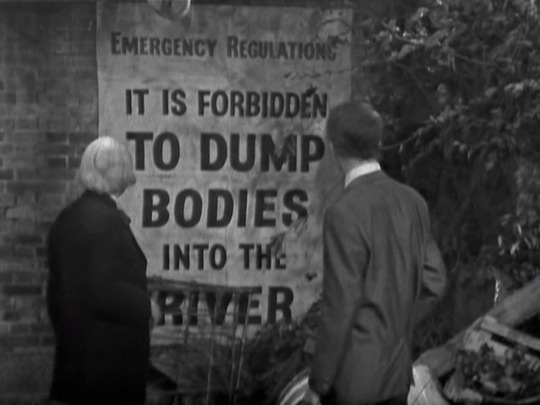
Rewatching Classic Doctor Who, some episodes I haven't seen in years, some of the animated reconstructions I haven't seen at all.
The Dalek Invasion of Earth AKA Daleks Threaten Earth AKA The Invaders AKA The Daleks (II) AKA The Return of the Daleks AKA The Daleks in Europe AKA Serial K
In February, 1964 Dalekmania hit Britain. The Daleks was immediately popular, spiking ratings and drawing big attention to this new show, Doctor Who. The donation of two of the original Dalek props to a children's charity drew attention and interest in the Daleks remained high. In March a sequel story was commissioned from Terry Nation for the second season, based on the strength of both The Daleks and The Keys of Marinus.
And what a sequel it was! It made use of extensive location shoots, the sight of Daleks chasing the TARDIS crew around London were instantly iconic. It also features the first quarry shoot for the show and probably one of the few times a quarry appears as an actual Earth quarry in Doctor Who history. The original 4 Dalek models were joined by 2 new ones, to flesh out the ranks of the invading army, which led to some impressively complex shoots in and around the Dalek saucer. During one of these complex shoots, William Hartnell was injured and had to sit out for an episode. The less said about the slyther, however, the better. And despite the best efforts of the crew to step up their games, some of the sets feature some obvious backdrops.
The story opens with an fantastic hook, a man with some kind of strange apparatus on his head, lurches about, tearing the mechanical apparatus off his head, and throws himself into the river. The TARDIS arrives and everyone is excited to have apparently returned to Earth. They very quickly realize, however, something is amiss. Susan injures herself and the TARDIS is blocked by rubble, the party separates once again displaying absolutely no degree of genre savvy. Barbara and Susan are discovered and "rescued" by some human resistance fighters. The Doctor and Ian come face-to-face with the unexpected... a Dalek, rising from the Thames. It's quite a cliffhanger!
It turns out that the Daleks have bombarded Earth with meteorites, infected them with a plague, and then invaded. Some of the survivors were enslaved, others were turned into Robomen: cyborg servants of the Daleks who eventually go mad and kill themselves. The Doctor immediately starts sassing the Daleks, who do not realize they have made a grave mistake in invading the Doctor's favorite planet. The Daleks don't recognize the Doctor (or Ian). The Doctor assumes that their previous adventure with the Daleks is "millions" of years in the future, which seems like the Doctor making stuff up again. The Daleks are running a mining operation for reasons unknown and the Doctor and Ian are taken aboard a Dalek saucer and come face to face with the Black Dalek, first seen in the Dalek comics. Of course, he's not entirely black yet, he needs another episode or two to finish his paint job.
The human resistance attacks. The Doctor escapes, Ian stays behind, Barbara is hurt and separated from Susan who escapes with David, a member of the resistance. Upon recovery Barbara goes off with Jenny, another member of the resistance, to find bomb making materials and killing a Dalek by running it over with a truck. Amongst Barbara's many talents, she apparently has her CDL (or whatever the UK equivalent is). One wheelchair bound member of the resistance shows some limited ability to move without his mobility device, which, to judge from recent critique, some people think is the most unbelievable thing to ever happen in Doctor Who. The Doctor meets up with Susan and David, third wheel on their extended date. Ian and another escapee make their way toward the Dalek's mining operation, meeting Mr. Rumbold from Are You Being Served? along the way (Nicholas Smith in his first speaking role).
Barbara and Jenny get sold out to the Daleks by two old women and are taken to the mine. After a series of adventures and romantic moments: The Doctor, Susan, and David also arrive at the mine. It turns out the Daleks are going to mine out the core of the Earth replace it with an engine so that they can pilot the planet as they choose, like some kind of Death Star. Which is either the dumbest thing I've ever heard or the most brilliant, I'm not sure. The Daleks are in the process of dropping a bomb down into the Earth's core when The Doctor and Barbara force the Robomen to turn on the Daleks through the power of impressions and everyone escapes, except the Daleks who are caught in the explosion. The Earth's core survives intact, but England gets a new active volcano.
The TARDIS is freed from debris and while Susan is busy debating leaving David, the Doctor makes her mind up for her, leaving her behind (with only one shoe?) to help rebuild the Earth, becoming the first companion to leave. Or be left anyway. Jenny was originally meant to become the new companion at this point but there were issues behind the scenes that prevented the character from being more than a one-shot. Personally I rather like Jenny, she would have made a much more interesting companion than Vicki.
It's a wonderful serial, using it's six episodes to the fullest and throwing almost everything into the mix to craft an impressive story, even alligators in the sewers. It feels more like Doctor Who than anything we've seen thus far. The Doctor taking a keen interest in upsetting the Daleks' plans and the crew firmly in the protagonist roles. William Hartnell gets at least three all-time classic lines including the famous speech at the end. It is a little convoluted, maybe, but almost everything is in service to the plot. There actually is a fair amount of effort put in to justifying David and Susan's relationship, more so than I remembered. They're actually kind of cute together? While it establishes the terrible "marrying off the companion to a guy she just met" standard exit, it is handled better here than in most other stories. Despite some cheap set backdrops (and the horrible slyther costume), there's some great camerawork and much more complex staging and scenes than we've seen previously. The Dalek Invasion of Earth spiked the Daleks' popularity even further leading to an avalanche of merchandising, comics, live appearances, and two feature films. And another sequel story, cementing the Daleks as the Doctor's only recurring nemesis in these early days. It also assured the popularity of the show, scoring high ratings.
Next up, The Rescue. The Doctor gets a new "granddaughter". For the first time, but not the last time.
#doctor who#classic doctor who#first doctor#ian chesterton#barbara wright#william hartnell#carole ann ford#jacqueline hill#susan foreman#william russell#doctor who rewatch#daleks#dalek invasion of earth#Serial K
18 notes
·
View notes
Text
Wrestling’s Bad Boys : The Story of The nWo and The Monday Night Wars
During the 1990s , Vince McMahon’s World Wrestling Federation and Ted Turner’s World Championship were in competition with each other to see which shows could get better ratings, this was called ‘ The Monday Night Wars ’. In 1993 , Ted Turner appointed a former wrestling commentator named Eric Bischoff ask executive producer of WCW. Bischoff took the failing promotion and turned it around by having creative and financial control. His vision was to turn from a Southern wrestling company to a modernized one that he knew people would tune in and watch. In order to do this, Bischoff eliminated a lot of Southern accents on commentary, increased the production value , avoided house shows with no income , and increased the number of big Pay-Per-Views for the company. He even recruited big names in the business such as Hulk Hogan and Macho Man Randy Savage.
In 1995, Bischoff wanted to compete with the WWF. He met with Ted Turner to see what he could do to compete with WWF RAW. Thus, Turner approved his idea and Monday Nitro was born. The inaugural episode of the show debuted on September 4,1995 and this kicked off the Monday Night War, and both companies battled for viewers and high ratings each week. Between 1995 and 1996, both the WWF and WCW would take turns beating each other in TV ratings. Nevertheless, WCW would be on top for 83 weeks.
The reason that WCW stayed on top of the ratings war in 1996 , was the rise of a new faction and storyline. This faction would come to be known as the New World Order ( nWo). The storyline started out with The Outsiders , Scott Hall, and Kevin Nash , leaving the WWF to come to Monday Nitro. People thought they were there on behalf of Vince McMahon to get a proxy war started. The Outsiders stated they would soon be joined by a third man. Therefore , the third man was revealed to be Hulk Hogan. Monday Nitro was always live while WWF RAW would alternate between live shows and taped shows. With this storyline , Bischoff hoped to get to WCW’s 18 to 35 year old range for their programming. Alongside the main booker for the promotion, Kevin Sullivan , Bischoff did so by using real names and edgier gimmicks. For example, Sting , one of the most popular stars of WCW went from colorful face paint to a look inspired by the movie , The Crow. They also added a new division to the show, the Cruiserweight division.
For the nWo , Eric Bischoff was influenced by NJPW when he attended their Battle Formation show in Japan in 1996.
During the nWo Invasion storyline , Eric Bischoff would be attacked by The Outsiders at Bash At The Beach in 1996. Hall and Nash kept teasing their third man during the attack as well. Nevertheless, Bischoff soon joined the group as their manager after Rowdy Roddy Piper revealed him to be the mystery new member of the group. Scott Hall called Bischoff’s gimmick , ‘ Eazy E ’. Bischoff also had a talk show similar to The Tonight Show , with Miss Elizabeth being his co host. The downfall of the promotion came in 1998 when WWF rebranded with the Attitude Era and took the top spot in the ratings. Soon, the nWo broke off into a few different groups. And the end of WCW came when Vince Russo replaced Bischoff and Vince McMahon purchasing the company.
Eric Bischoff now has a podcast called 83 weeks and a show called Wise Choices. Bischoff was inducted into the WWE Hall of Fame in 2021 and the nWo was inducted into the WWE Hall of Fame in 2020.
My Final Thoughts:
The Monday Night Wars will always be one of my favorite things to talk about when it comes to professional wrestling. I was born in 1997 during it. I also absolutely love the nWo because they were different. They made it cool to be the bad guy. I probably would’ve mainly watched WCW just so I could cheer them on. Eric Bischoff is one of the most iconic names in wrestling history. To me , he changed the game when WCW had its rebrand. He’s also a major reason I became a manager. I study him all of the time. I even bought an nWo shirt because I’m a big fan. I’ll always be nWo 4 Life!
Love You All,
- Kay







#90s wrestling#wcw monday nitro#wwe hall of fame#eric bischoff#scott hall#kevin nash#hulk hogan#wcw nwo revenge#wwf attitude#wrestling blog#Spotify
2 notes
·
View notes
Text
A Glimpse Behind the Red Visor
Teen Tech & Heroes, Issue #24
By Sarah Summers, Teen Tech Correspondent
Imagine a world where heroes don't wear capes but red body armor, and their smiles are hidden behind visors. In this world, Tactical Paramedic MA35X is one of those silent saviors, a young hero working tirelessly to keep us safe. We had the chance to accompany him for a day.

The Early Morning Routine
The day for MA35X begins long before the sun graces the horizon. Rising from a sleeping capsule with the precision of a well-oiled machine, they step into a world where every moment counts.
One of the first tasks involves ensuring is that their chastity gear is secure. For Tactical Paramedics like MA35X, control over every aspect of their lives is essential, even down to their most personal choices.
MA35X: First thing, we climb out of our sleeping capsules, still a bit groggy. You get used to those cozy coffins, I mean capsules, after a while. Then comes the delightful part - checking the chastity gear. We've got a buddy system for that. It's all about trust and camaraderie. A fellow paramedic helps ensure everything's locked up tight, so to speak. I've come to appreciate the discipline it brings.
Physical Prowess
Next comes the morning physical training, a grueling session designed to keep their bodies in peak condition. Tactical Paramedics need to be strong and agile, ready to respond to any emergency. It's a regimen that forges both physical and mental fortitude.
Trainer: (with a sardonic grin) MA35X, your body's like a well-oiled machine, Just remember, even the most finely tuned machines need a little maintenance.
Cleanliness and Precision
As they enter the prep area, they both grab their shaving kits and get down to business. Precision is key, and they've had plenty of practice. With the hum of electric razors and the careful application of foam, their bodies soon gleam hairless, like polished warriors.
Their camaraderie and dedication to their roles are evident in every move. Hairless bodies aren't just for aesthetics; they help streamline their movements and ensure their armor fits like a second skin.
Reporter: I noticed you don't seem to mind that I'm here while you're getting ready. Isn't that a bit… invasive? MA35X: Not at all, ma'am. Transparency is crucial in our line of work. We're used to being watched, especially during training. It helps us learn and improve.
TP19R: (nods) Absolutely, MA35X. A clean slate for a new day of duty.
The Iconic Red Armor
Once their body is prepared, it's time to suit up. The red tactical gear is more than just a uniform; it's a symbol of readiness and a commitment to duty. The armor is a complex fusion of protection and technology, tailored to fit each paramedic like a second skin. The armor, a blend of protection and technology, hugs every contour of MA35X's body. It's a symbol of dedication, a reminder that they're always ready to respond to emergencies.
MA35X: (adjusting his armor) You know, when I first started this gig, I thought wearing this tactical armor would be a pain, but now, I can't imagine it any other way. It's like a second skin, Ma'am. Reporter: (curious) Really? It doesn't look comfy at all. MA35X: (smiles) Well, appearances can be deceiving. This armor is designed to be snug and secure. It moves with me, almost like an extension of my own body. And the way it distributes the weight of the gear is just... efficient.
Their helmets are a marvel of augmented reality, with heads-up displays that provide vital patient information, communication with the command center, and even live video feeds from drones above.
The Breakfast of Heroes
No morning would be complete without a hearty breakfast. High-energy rations fuel them for the strenuous tasks ahead. It's a meal eaten with focus, every bite a reminder of their dedication to service.
MA35X: (smirking) Well, you know how it is. Strict control over what we eat, when we eat it. Keeps us in tip-top shape.
Strategic Planning
Finally, there's the briefing. Tactical Paramedics gather to review the day's assignments, discussing potential scenarios and how to respond. It's a time to sharpen their minds and ensure they're prepared for whatever challenges they may face.
As MA35X takes us through this daily ritual, it's clear that being a Tactical Paramedic is more than a job; it's a way of life. It requires unwavering discipline, physical prowess, and a readiness to face the unknown. The red armor they wear may hide their identity, but it reveals their unwavering commitment to keeping our world safe.
Tactical Paramedic MA35X and their fellow heroes may work in the shadows, but their impact shines brightly in our lives, reminding us that heroes exist among us, ready to protect and serve.
Training Beyond Ordinary
Becoming a tactical paramedic is no walk in the park. MA35X went through rigorous training that included everything from mastering advanced medical techniques to self-defense drills. But the most challenging part? Learning to stay calm under pressure.
Reporter: How did you end up as a Tactical Paramedic? MA35X: Ah, ma'am, it was a path that found me. After my basic training, they saw potential in my performance and recommended this specialization.
A Rare Glimpse Beneath the Visor
MA35X: (with determination) Time to gear up and lock down, Ma'am. MA35X reaches for his helmet, which rests nearby. He carefully places it on his head, securing it with practiced ease. The helmet seals with a soft hiss, locking into place. His face is now obscured by the reflective visor.
Reporter: (intrigued) Why do you always wear your helmet, even during interviews? MA35X: (matter-of-factly) It's a part of the job, Ma'am. We're trained to be ready for any situation at a moment's notice. The helmet not only protects me from potential threats but also keeps me connected to our network. It's got a heads-up display that provides vital information, and I can communicate with my team and HQ through it.
While the red body armor may hide their identity, it doesn't conceal the compassion that lies beneath. MA35X recounts a touching story of helping a scared child during a chaotic accident scene, using their calm demeanor and kind words to ease the child's fear.
2 notes
·
View notes
Text
1950s Cinema
The 1950s was a significant decade for cinema, marked by various movements, genres, and iconic films. The decade witnessed the continuation of established genres while also paving the way for new styles and storytelling techniques.
Golden Age of Hollywood: The 1950s were part of the Golden Age of Hollywood, characterized by the dominance of major studios and the star system. Many renowned actors and actresses emerged during this period.
Film Noir: Film noir continued to thrive in the 1950s, featuring dark, crime-oriented stories with morally ambiguous characters and shadowy cinematography. Notable examples include "Double Indemnity" (1944), "The Third Man" (1949), and "Touch of Evil" (1958).
Westerns: Westerns were immensely popular during this decade, with many iconic films being produced. Directors like John Ford and actors like John Wayne became synonymous with the genre. Some well-known films include "High Noon" (1952), "Shane" (1953), and "The Searchers" (1956).
Science Fiction: The 1950s saw a surge in science fiction films, often reflecting Cold War anxieties and fears of atomic warfare. Classics like "The Day the Earth Stood Still" (1951), "Forbidden Planet" (1956), and "Invasion of the Body Snatchers" (1956) captivated audiences.
Musical Films: The 1950s were also known for extravagant musical films. Productions like "Singin' in the Rain" (1952), "Gentlemen Prefer Blondes" (1953), and "West Side Story" (1961) showcased elaborate dance numbers and memorable songs.
Japanese Cinema: The 1950s marked the rise of Japanese cinema, particularly the works of renowned directors like Akira Kurosawa. Films like "Rashomon" (1950), "Seven Samurai" (1954), and "Tokyo Story" (1953) gained international acclaim.
European Cinema: European cinema also made significant contributions during this era. Filmmakers such as Federico Fellini, Ingmar Bergman, and François Truffaut gained prominence, producing influential films like "La Strada" (1954), "The Seventh Seal" (1957), and "The 400 Blows" (1959).
5 notes
·
View notes
Note
For as long as I've been following you (not too long honestly) I thought your pfp was kaneki and today I viewed it. I've been betrayed who is that he ate kaneki and became him
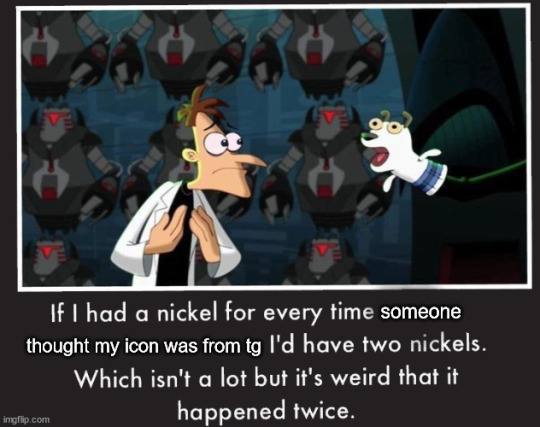
If you haven't been following me for long then it's only natural, I have not posted much about my other fandoms in way too long... (TG has consumed the brain. help.)
He is named Rika and he is from the manga Tenkuu Shinpan (High-Rise Invasion/Sky High Survival/etc). Outside of TG, he's my main blorbo. I've loved him for slightly longer than even Donato, to say.
My icon was picked out of the ending of the disastrous anime adaptation that absolutely sucks (think tg anime level of disaster here). That said, seeing him smile (he does NOT normally smile) did things to me and thus my baby boy got promoted to icon uwu

(^ the frame in question)
And lay your worries to rest: he is not Kirby. And he wouldn't eat human flesh (or ghoul for that matter) - Kaneki is safe for now (from his teeth, at least. the sledgehammer is another question)
gonna go on a Rika reblogging spree just for you, anon.
#the 'young koutarou' assumption was fair but i simply do not like kaneki enough to have him as my icon#apart maybe eyeless v14 kaneki hmm#thank you <3#honjo rika
2 notes
·
View notes
Text
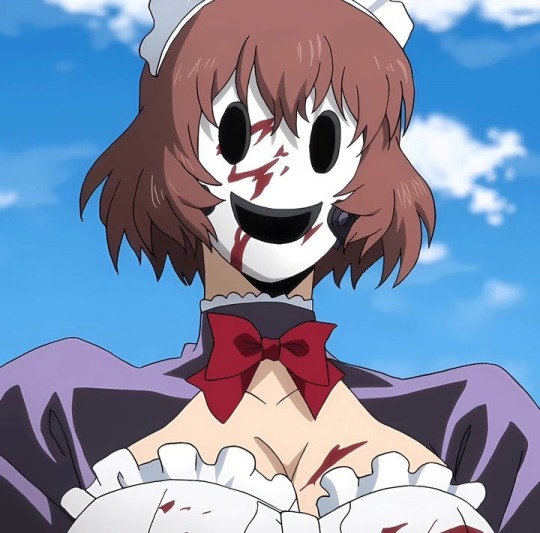


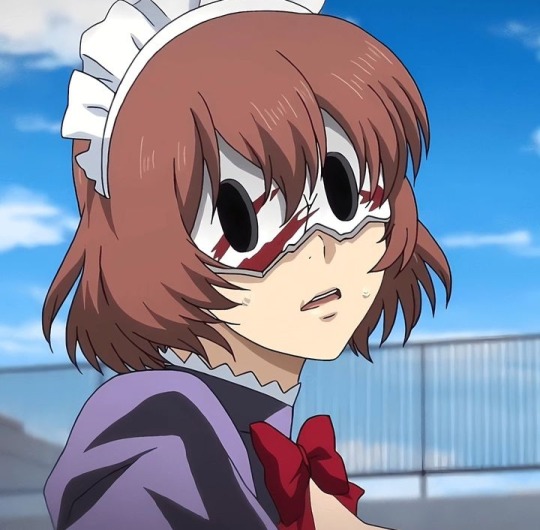

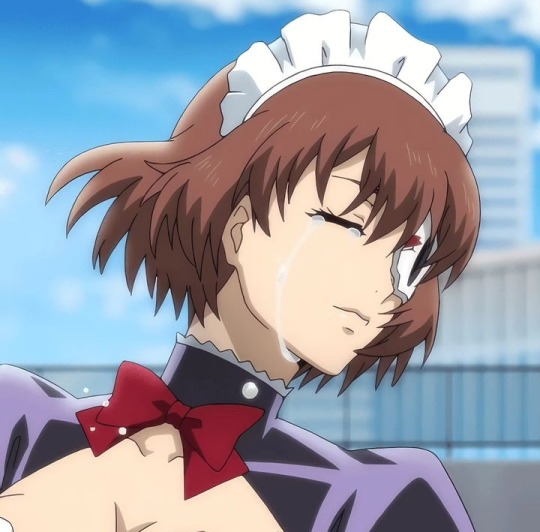
4 notes
·
View notes
Text
Empowering Device Innovation: The Key Role of Medical Device CROs in R&D
The global medical device contract research organization market size is expected to reach USD 14.0 billion by 2030, growing at a CAGR of 8.95% from 2024 to 2030, according to a new report by Grand View Research, Inc. The key market growth drivers include rising demand for time-saving, cost efficient, and expertise in the area, which accelerates the process of devices reaching the market. In addition, outsourcing to a CRO with detailed expertise in a medical device helps in meeting the complex regulatory requirements and audits as they work on it on a daily basis. This further supports the demand for medical device CRO services.
CROs also have access to the most advanced technological resources, such as all the latest and most advanced hardware, software, and internet-based applications, to make the process fast and maintain quality. A significant number of CROs such as Iqvia, Inc., ICON Plc, Charles River, and others offering high-quality medical device-related research services are expected to improve medical device-related research collaborations in the coming years and thus boost the market growth.
Medical procedures are moving toward more laparoscopic and catheter-based technology. There has been a growing demand for minimally invasive procedures worldwide, as they are less risky compared to other surgical procedures. This is expected to boost the demand for advanced devices for screening and monitoring surgical procedures. Minimally invasive procedures are also enhancing the demand for new miniature technology. This is expected to improve the number of research in advanced less invasive medical devices and hence promote market growth.
Thus, growing complexities in medical devices, changing consumer preferences, and increasing demand for portable devices are among the factors expected to drive the need for an expert team for the development of medical devices, thereby increasing the demand for CROs in the market.
Medical Device Contract Research Organization Market Report Highlights
The clinical phase segment dominated the market in 2023. This can be attributed to the development of novel medical devices, which involves numerous clinical trials. Hence, medical device companies prefer appointing a CRO to provide clinical trial services with the required infrastructure, staff, and expertise or opening a separate laboratory
Based on service, clinical monitoring held the largest market share of 21.0% in 2023. Clinical trialsneed comprehensive monitoring for their success. Therefore, companies outsource clinical monitoring functions to CROs with staff expertise and updated training programs. These CRO conduct monitoring activities in accordance with a sponsor’s study protocol, standard operating procedures, FDA regulations, and Good Clinical Practice (GCP)
Based on device type, the diagnostic devices segment held a revenue share of 44.9% in 2023. The growing prevalence of diseases worldwide is supporting the demand for CRO activities for diagnostic devices. Besides, increasing prevalence of cardiovascular diseases, cancer, among other diseases drives the market growth
Asia Pacific dominated the market with a revenue share of 41.9% in 2023. The market’s strong growth is due to various factors such as improvements in the regulatory framework, higher cost savings, increasing complexity in devices, and a growing number of medical device research organizations in the region
Medical Device Contract Research Organization Market Segmentation
Grand View Research has segmented the global medical device contract research organization market based on phase, service, device type, and region:
Medical Device Contract Research Organization Phase Outlook (Revenue, USD Million, 2018 - 2030)
Preclinical
Clinical
Medical Device Contract Research Organization Service Outlook (Revenue, USD Million, 2018 - 2030)
Project Management/Clinical Supply Management
Data Management
Regulatory/Medical Affairs
Medical Writing
Clinical Monitoring
Quality Management/Assurance
Bio-statistics
Investigator Payments
Laboratory
Patient & Site Recruitment
Technology
Others
Medical Device Contract Research Organization Device Type Outlook (Revenue, USD Million, 2018 - 2030)
MedTech Devices
Diagnostic Devices
Handheld Devices
Others
Medical Device Contract Research Organization Regional Outlook (Revenue, USD Million, 2018 - 2030)
North America
US
Canada
Europe
UK
Germany
France
Italy
Spain
Denmark
Sweden
Norway
Asia Pacific
Japan
China
India
Australia
South Korea
Thailand
Latin America
Brazil
Mexico
Argentina
Middle East & Africa
South Africa
Saudi Arabia
UAE
Kuwait
List of Key Players
IQVIA, Inc.
Charles River Laboratories
ICON, plc
Syneos Health
Laboratory Corporation of America Holdings
WuXi AppTec
Medpace
Eurofins Scientific SE
Promedica International
Qserve
Order a free sample PDF of the Medical Device Contract Research Organization Market Intelligence Study, published by Grand View Research.
0 notes
Text
Pretend To Be A Time Traveler Day
Traveling to my birth year 2003 promises to be an exciting and fun-filled trip back into an era bursting with early 2000s culture, technologies, and major events. Here's what I may discover:
Technology and Gadgets
Mobile Phones: Flip phones like Razr and Nokia 3310 reigned in the waves of flip-phones. Texting had become a big thing, but smartphones were still a few years down the line.
Computers: Desktop PCs with Windows XP were the norm. Everybody was using bulky CRT monitors. And the net was only dial-up for most people at this time.
Gaming: PlayStation 2, GameCube, and Xbox were the primary gaming consoles. Games such as The Sims, GTA: Vice City, and Pokémon Ruby & Sapphire skyrocketed in fame.
Pop Culture
Music: Many tracks made by artists like Beyoncé (Crazy in Love), Eminem (Lose Yourself), and Britney Spears were high up on the charts.
Movies: "Finding Nemo," "The Lord of the Rings: The Return of the King," and "Pirates of the Caribbean: The Curse of the Black Pearl" were examples of iconic films released during that time.
TV Shows: When it came to series, popular productions included "Friends," "Gilmore Girls," "The O.C.," and "SpongeBob SquarePants."
Fashion
Low-rise denim and cargo pants, on the other hand, crop tops and velour tracksuits (most popularly like Juicy Couture) were en vogue.
Chunky highlights and butterfly clips ruled the hair scene as far as 'trendy' went.
World Scene
The U.S. invasion of Iraq took place in March 2003 and is among the major global happenings.
Social networking sites took root, with the likes of MySpace getting huge buzzes.
Winning England's rugby team at the World Cup against Australia.
Life as Known
The only forms of social media during that time were MSN Messenger or AIM to chat with people.
For those movie weekends, DVD was the technology, and Blockbuster still held them hostage.
Some people continued to capture memorable moments using film or the latest in early digital cameras.
Back in 2003, life was a whole lot simpler in terms of technology, having a whole lot of nostalgia about it. Most importantly, I want to travel back and see the most special moment where my mom and dad became parents to me.
0 notes